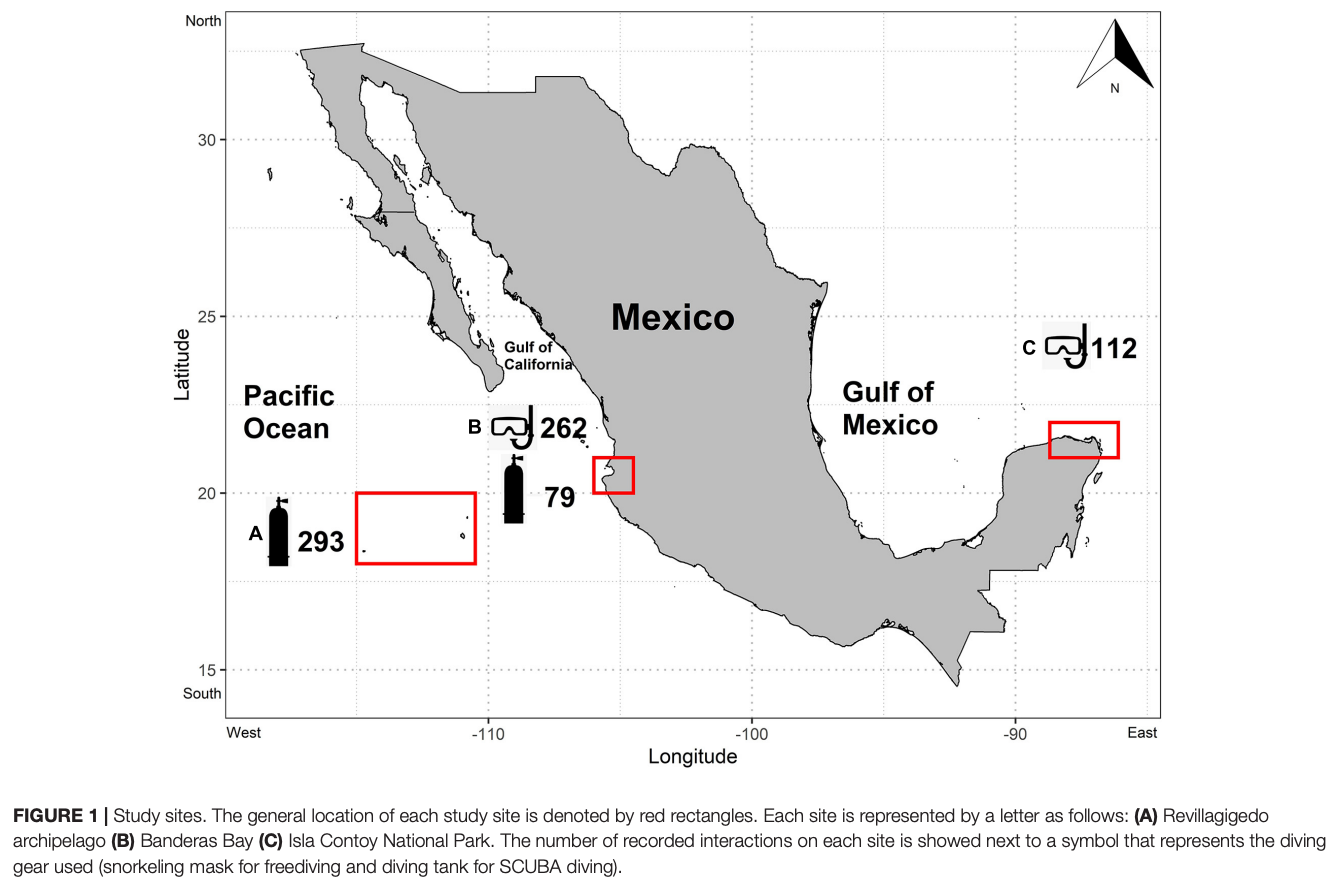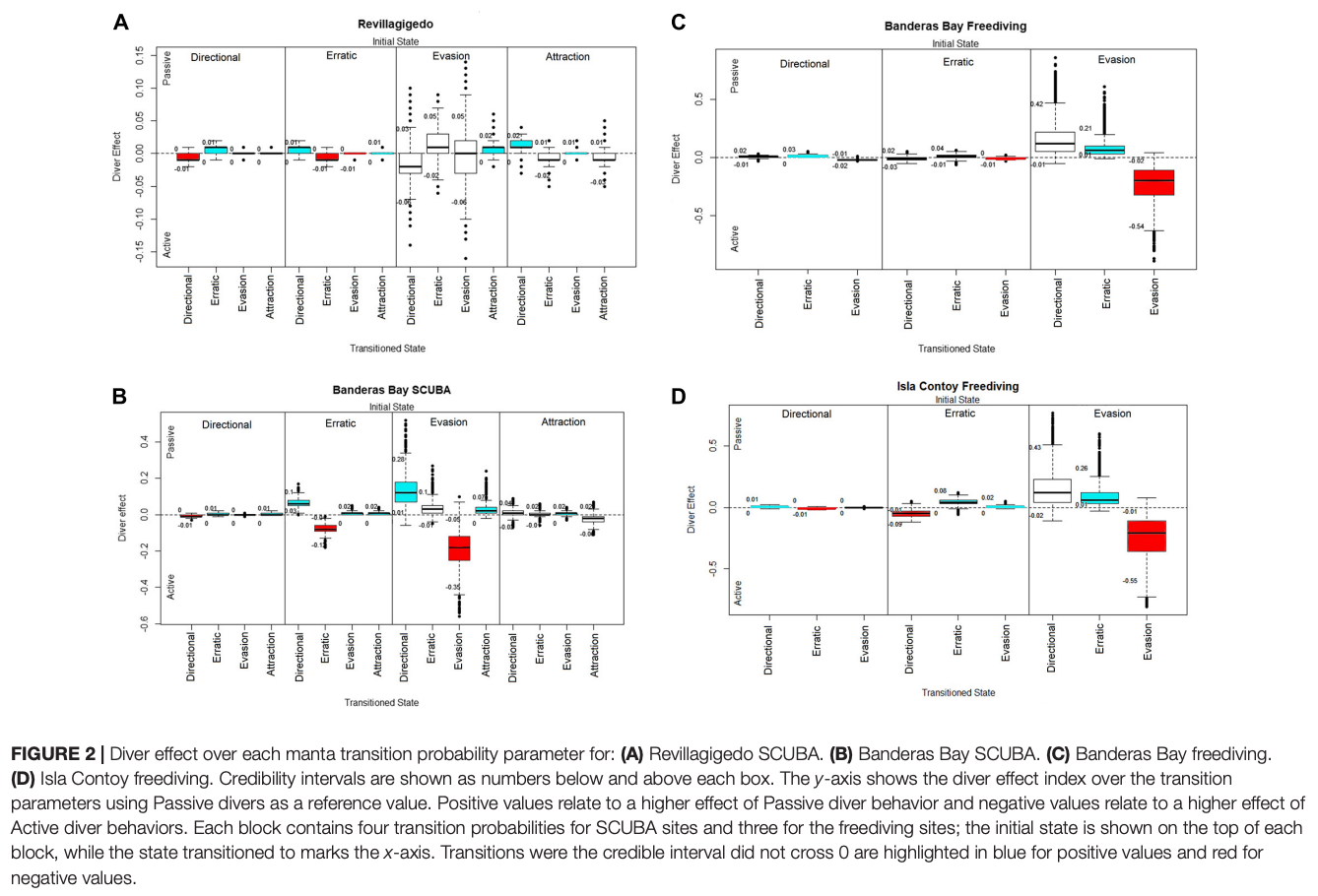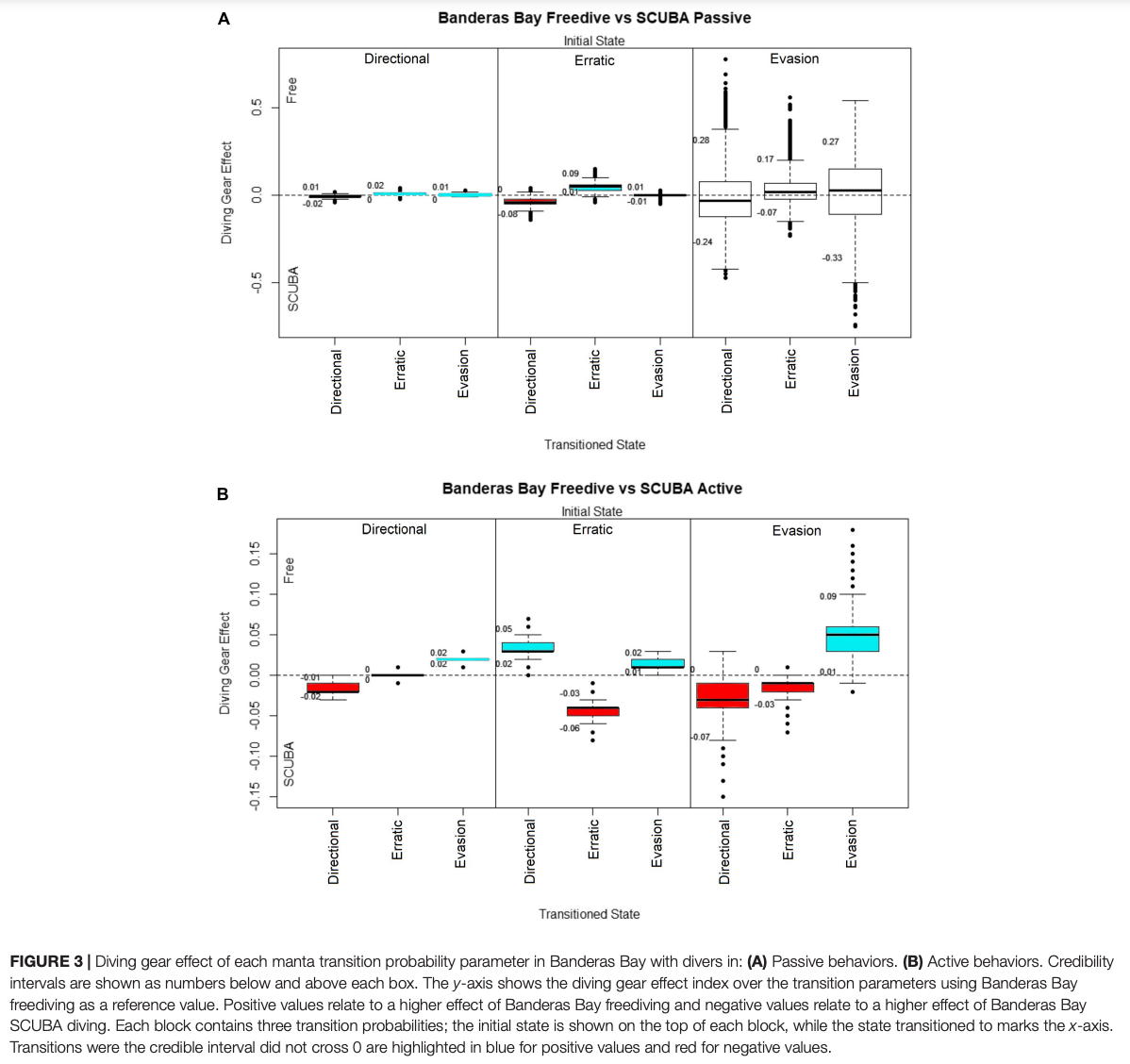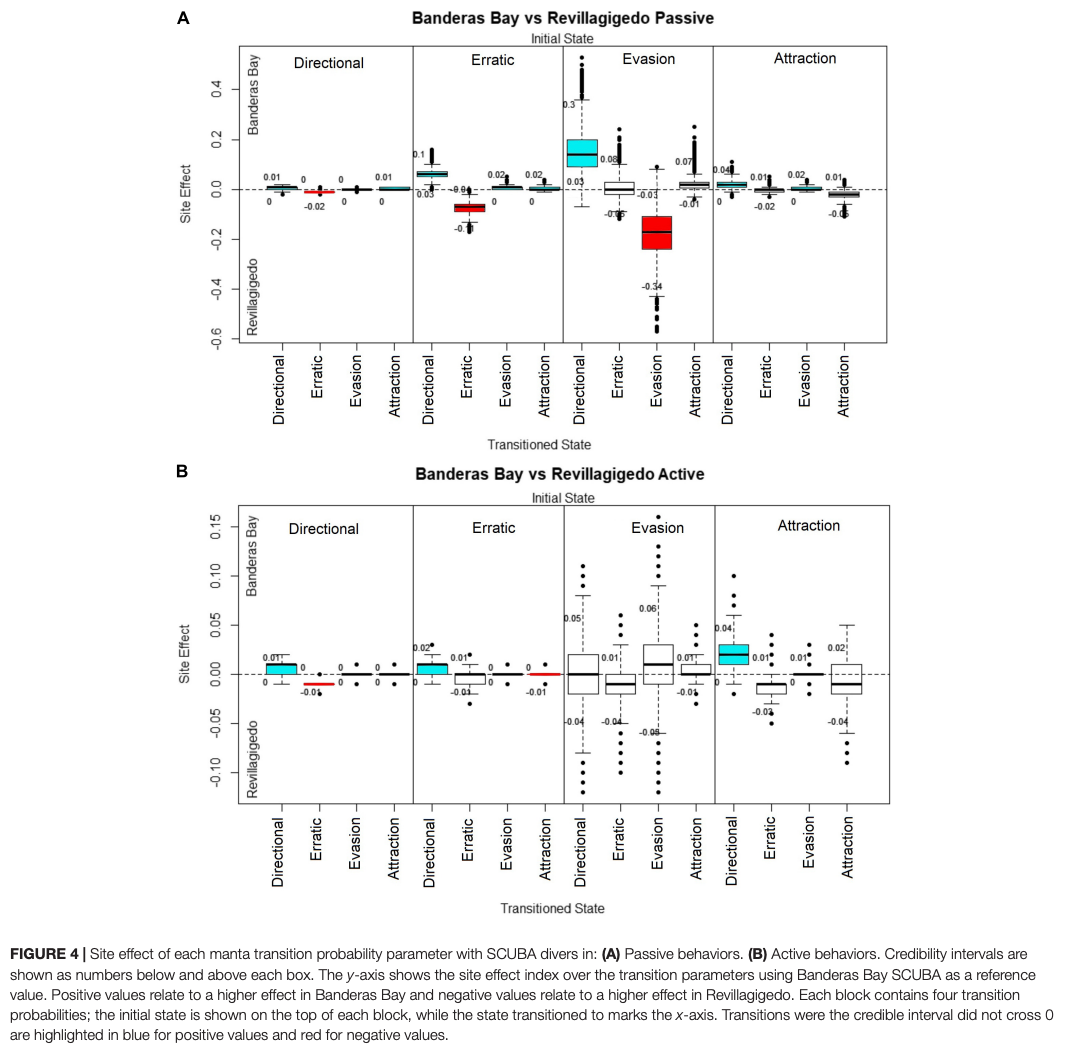Quantifying the Effects of Diver Interactions on Manta Ray Behavior at Their Aggregation Sites
June 2021
Miguel de Jesús Gómez-García, María del Carmen Blázquez-Moreno, Joshua David Stewart, Vianey Leos-Barajas, Iliana Araceli Fonseca-Ponce, Aldo Alfonso Zavala-Jiménez, Karen Fuentes & James T. Ketchum
Keywords: Markov models • Mexican Pacific • Batoid • Wildlife Tourism • Animal Behavior





Summary: Manta rays are endangered due to overfishing and exploitation, and tourism has been suggested as a sustainable alternative for conservation. However, the effects of tourism on manta rays are not fully understood. This study analysed the behaviour of manta rays at three sites in Mexico and found that they display different responses to divers, with manta rays in Banderas Bay exhibiting more erratic and evasion behaviours. The study emphasises the importance of regulations and best practices for achieving less disturbing encounters for manta rays and divers.
Abstract
“Manta rays (Mobula birostris, Mobula. cf. birostris, and Mobula alfredi), the largest mobulid rays, are subjected to exploitation and overfishing in certain parts of the world. Tourism has been supported as a sustainable alternative for the conservation of the species, and a potential source of economic spillover to local populations. Nevertheless, the effects of tourism over these highly social animals remains unknown. Manta rays aggregate at three sites in Mexico: Oceanic manta rays (M. birostris) in The Revillagigedo Archipelago and Banderas Bay in the Pacific. Caribbean manta rays (M. cf. birostris) around Isla Contoy National Park in the Caribbean. We analyzed the behavior of manta rays using video data collected by local researchers and tourism operators to determine how diver behaviors and techniques (SCUBA and free diving) affect them. Diver activities were grouped into passive and active categories. We described 16 behaviors and grouped them into four behavioral states: Directional, erratic, attraction and evasion to divers. We modeled the sequence of behaviors exhibited by manta rays via first order Markov chains. Our models accounted for passive and active diver behavior when modeling the changes in manta behavior. Manta rays in Banderas Bay and Revillagigedo displayed a higher frequency of erratic behaviors than at Isla Contoy, while Banderas Bay manta rays transitioned to evasion behaviors more often. Manta rays responded similarly in both sites to active divers. At freediving sites, manta rays from Isla Contoy displayed evasion less frequently than at Banderas Bay. Changes in manta ray behavior were similar for both sites, but mantas in Banderas Bay transitioned to evasion more with active divers. The increased food availability for Isla Contoy manta rays could be the reason for the reduced response toward divers in this site. The existence of additional stressors such as both traffic in Banderas Bay could be causing the mantas in this site to respond more frequently to active divers. This study, the first of its kind in oceanic and Caribbean manta rays, highlights that regulations and the use of best practices are vital for achieving longer and less disturbing encounters for both manta rays and divers.”
Author Affiliations
Centro de Investigaciones Biológicas del Noroeste S.C.
Pelagios Kakunjá A. C.
The Manta Trust
Department of Statistical Sciences, University of Toronto
School of the Environment, University of Toronto
Proyecto Manta Pacific Mexico
Laboratorio de Ecología, Tecnológico Nacional de México/IT Bahía de Banderas
Laboratorio de Ecología Marina, Centro de Investigaciones Costeras, Centro Universitario de la Costa, Universidad de Guadalajara
Manta México Caribe A. C.
MigraMar
Funded by
CONACYT Mexico (National Council for Science and Technology)


